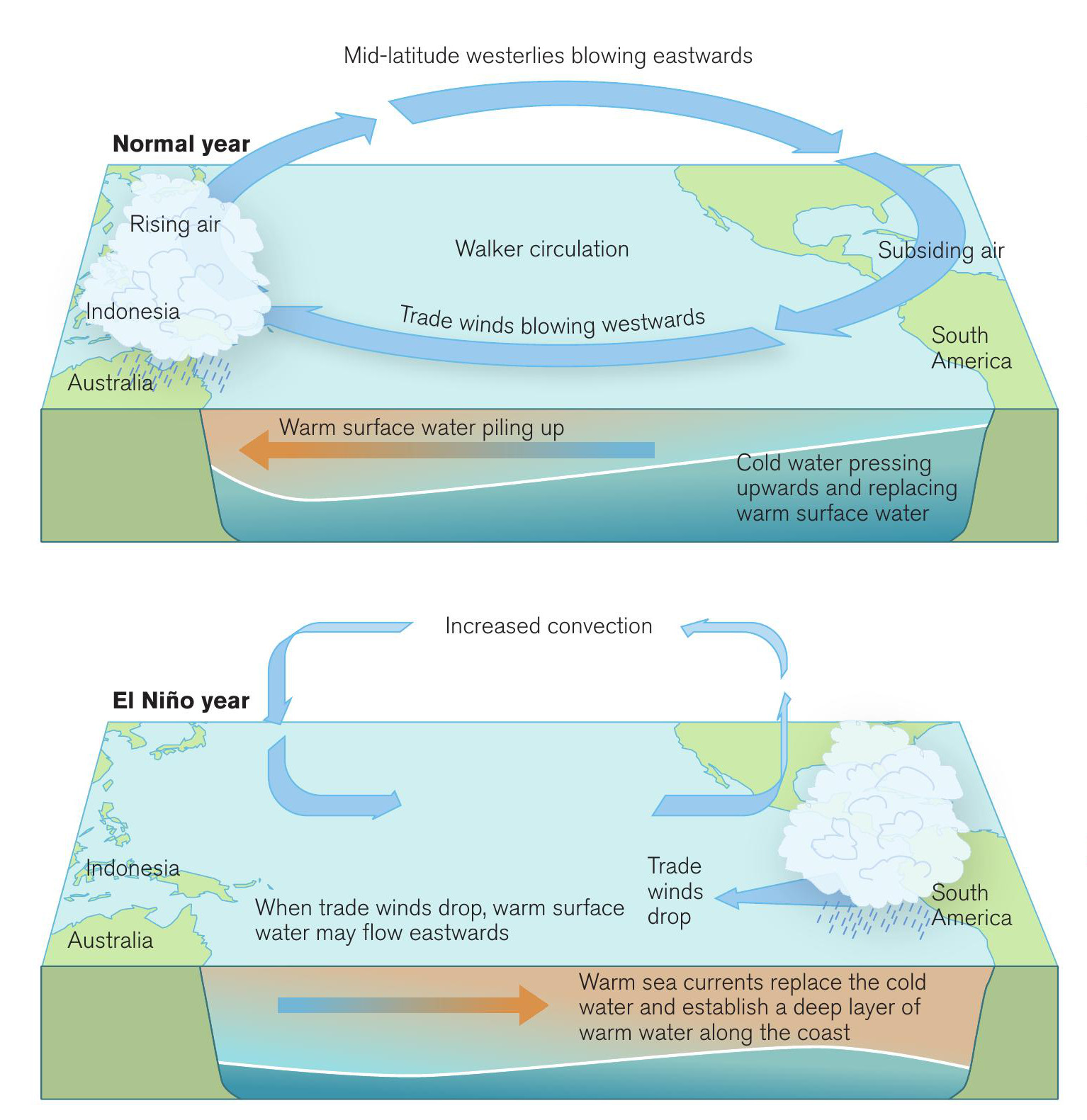
Global weather and climate are driven by the oceans. Equatorial waters, warmed by solar radiation, generate ocean currents. These both drive the circulation of water around the ocean basins and directly affect atmospheric circulation by heating the air masses above them. The world’s weather systems are very much the result of hot air masses moving away from the equator and cold air returning from polar regions. The main wind systems (trade winds and mid-latitude westerlies) ref lect the redistribution of heat from low latitudes towards the poles and the return f low of cold air back towards the equator.
Of course, the Pacific Ocean is by far the world’s largest mass of water and so it is hardly surprising that people living around its shores pay special attention to its changing state. In the last few decades it has become obvious that weather systems right around the Pacific Basin — and as a result, right around the globe — are intimately affected by what happens in the equatorial regions of the Pacific Ocean. The terms El Niño and La Niña are now commonplace, even in news reports on television and in the papers. So, what are they?
Your organisation does not have access to this article.
Sign up today to give your students the edge they need to achieve their best grades with subject expertise
Subscribe




